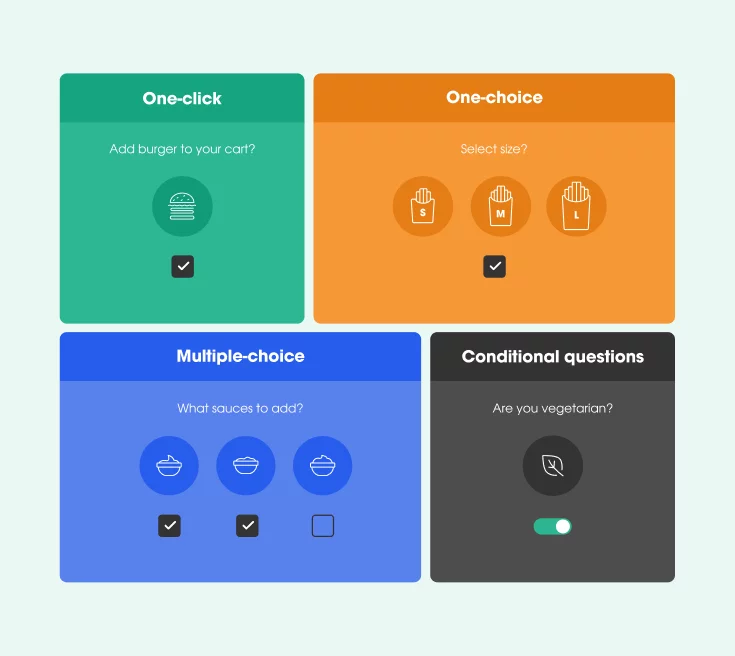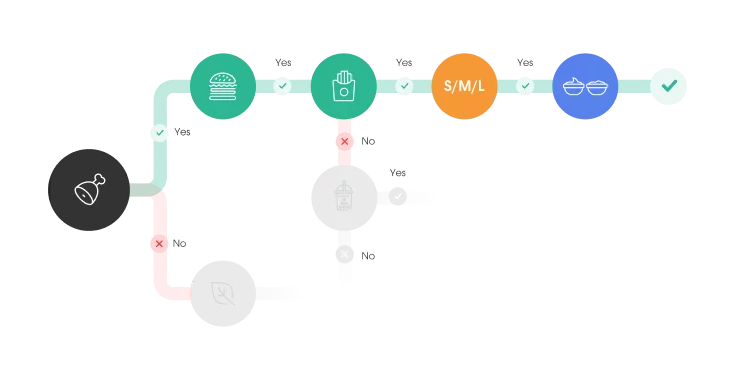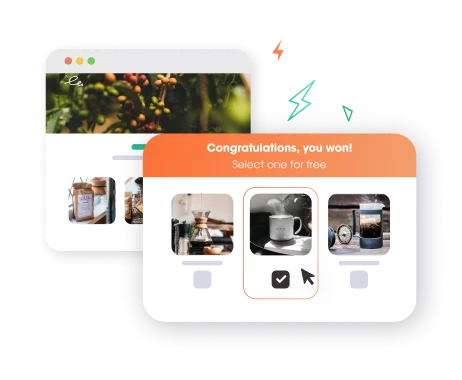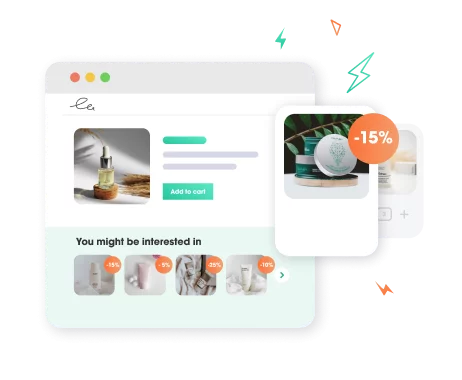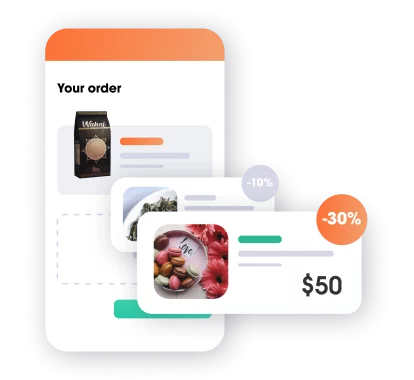What exactly are subscription upsells and cross-sells?
The concept of upsells and cross-sells is relatively simple to understand. Here’s an example of how it works. Say you’re the founder of a subscription app that offers a monthly subscription to some kind of subscription product. Imagine a user browsing through your subscription app for the first time, getting excited about your offering, and adding their first subscription item to their cart.
There’s two approaches you can employ here. The first would have you accept their choice of subscription product and allow them to convert at their own speed, with no influence on your part. The second, however, would see you take a craftier approach, providing incentivized opportunities for them to purchase other products at various points through the buying journey.
Upsells and cross-sells are two examples of these opportunities. Upsells, as the word describes, encourage the purchase of a higher-value subscription product, or a one-time product, in an attempt to boost either the current cart price or the ongoing value of their subscription. Cross-sells, on the other hand, often entail recommendations based specifically on the product selected.
The importance of upselling & cross-selling for subscription-first businesses
So, why are upsells and cross-sells important? Well, for any subscription company, selling any kind of subscription product, the journey potential customers take from the moment they enter your subscription site is an ongoing one! Your goal is to maximize the customer lifetime value, which is best achieved through providing the most value possible over the period they’re with you. This means that if you can work in a cheeky upsell or cross-sell as part of the customer experience before their first order has even shipped, you’re already one step ahead.
10/10 of Subbly’s most successful merchants use funnels for a reason: it allows them to provide an enticing, fully customized checkout for their customers that encourages upsells and maximize revenue, no matter where they are in the process or what kind of subscription product they’re being offered.
When can upsell funnels be used?
Upsell funnels can be used to display offers pre-purchase, mid-purchase (after the payment method is entered), and post-purchase, and work for a variety of different subscription types.
Pre-purchase offers
Offers which appear before the checkout process starts. That’s a nice opportunity to offer a one-time product, perhaps for free, in order to increase the likelihood of conversion. You could also try to upsell customers with a more expensive product, but providing a discount for the first order.
Mid-purchase offers
Offers which appear after a customer enters their payment method. It’s a perfect time to upsell with a product linked to their original order!
Post-purchase offers
Offers which appear after a customer has purchased the initial item. That’s the highest conversion rate stage as the customer doesn’t need to go through the checkout process again. Use a one-click offer type to minimize any friction on the customer’s side. You may also offer a downsell if the customer rejected the previous offer.
How Subbly’s subscription-first funnels can supercharge your ecommerce sales
Subbly’s subscription-first funnels allow you to make three kinds of offers
What types of offers are there?
Subbly’s subscription-first funnels allow you to make three kinds of offers:
Type 1: One-click offers
With this variant, one product is offered, the customer can choose to accept it or not.
Type 2: One-choice
With this variant, on the other hand, multiple products may be offered, and the customer can choose only one.
Type 3: Multiple-choice
Finally, with this variant, multiple products can be offered, multiple can be selected.
Note: At the moment, this is only available for one-time products, as current checkout functionality does not allow purchasing of multiple subscriptions.
String together as many offers as you want with chained offers
When a customer accepts or declines an offer, you can suggest another relevant product. For example, if you’re selling a wine subscription, and you offer a one-time opportunity to buy a bottle of champagne, you can offer a customer a custom branded bottle stopper after they’ve accepted the bottle. If they deny that offer, you could offer them something else less expensive, but that also adds value, such as, for example, a booklet you’d created internally educating them on different varieties of grapes.
To learn more about our post-purchase and pre-purchase flows, check out our announcement posts here.
In our last update, we added the possibility to create multiple funnels, as well as the ability to select what products to show the funnel with. For example, if you sell an accessories subscription, you can offer cufflinks as an upsell when a customer has a box of ties in their cart, and vice versa.
How can I use funnels?
For a subscription-based business, there’s a variety of major ways that upsell funnels can help you increase your sales.
Increase checkout conversion
- Offer customers free product during the pre-purchase stage if they purchase the main product
Increase AOV (average order value)
- Offer customers a one-time product with a discount during the pre-purchase stage (cross-sell)
- Offer customers supplementary products with a discount during the mid-purchase stage
- Offer customers a 2-3x priced product with a 50% discount during the mid-purchase stage
Increase ARPU (average revenue per user)
- Offer customers higher priced products with a discount on the first shipment during the pre-purchase stage (upsell)
- Offer customers a discount on a higher-end plan during the post-purchase stage (downsell)
Three inspiring examples of subscription upsell funnel success
One of the biggest success stories out of all the companies that have put our upsell funnels feature to good use was Boobox, who increased their ARPU (average revenue per user) by 80% since the first post-purchase offer was accepted. Wine retailer Vino Mojo, on the other hand, was able to convert up to 30% of their new signups on one upsell offer. It doesn’t stop there, though – these reports from people who’ve used our funnels options can tell you a lot about their power.
Example 1
“The funnels have been an extremely useful tool. In terms of pre-purchase upsells, we have seen a 35-40% uptake (we offer a past box or a book), while the high-ticket post-purchase upsell sees about a 5-15% uptake, which is great! AOV has increased by $15, and we can’t wait to see the effects on our LTV.”
Example 2
“I’ve only just started using the funnels feature, and so far it’s been great! I’m finding that it’s a fantastic way to sell past boxes to my subscribers. Before I could only have one upsell, but now customers can choose from a list of products — I recently had one buy 6 boxes/products in one transaction, which was solely down to this feature for sure?”
Example 3
“From my recent experience, I’ve found that the funnel feature works really well — my average order is over $100 because of the upsells/post-purchase options.”
Closing words
Funnels can be one of the most powerful ways to get customers itching to check out and buy more products from your range. With Halloween, Black Friday, and the Christmas season around the corner, you definitely want to make sure you’ve got everything up and running in time.
Combining funnels with other powerful Subbly features like automated communication, as well as releasing the perfect combination of offers will help you increase your conversion, average order value, average revenue per user, and ultimately… your customer LTV!
Don’t restrict yourself to static offers — make sure your checkout is as dynamic as your products and watch those numbers go up!


